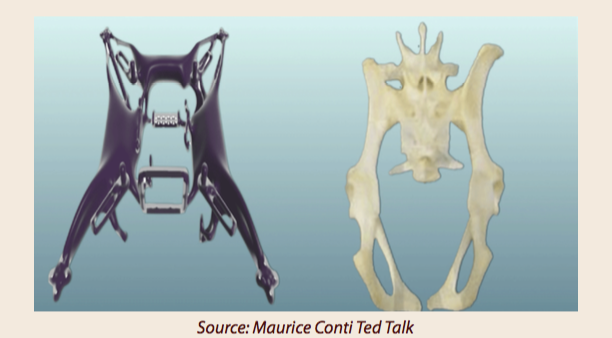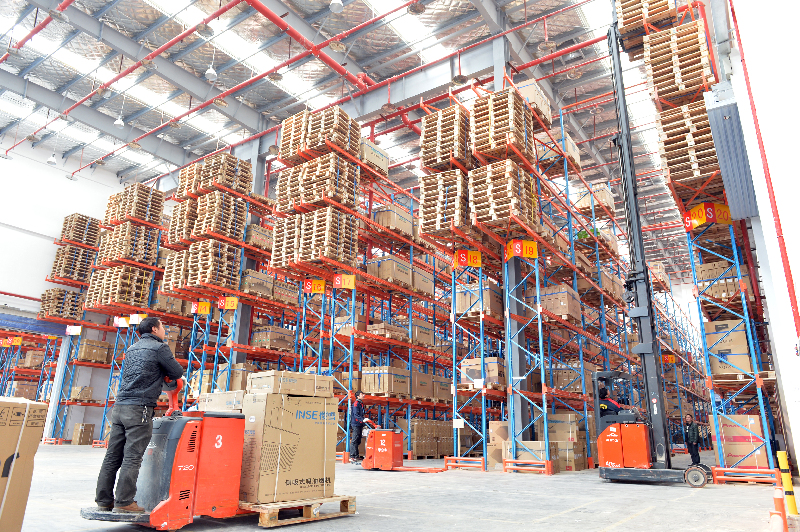We are currently living in the era that is soon to be a new age of human history, “Augmented Age”, where our human ability will be augmented by computational thinking, and robotic systems that will help us create tools that could not have been created without the cooperation of humans, robots, and AI. Computers are now making the leap from passive to generative. Generatively design computers use its algorithms to synthesize geometry to come up with an intuitive and optimized design all by themselves with the given goals and constraints.
In the following blog, the author shows a project by Bandito Brothers, a L.A. based company where they teamed up with several digital companies to make the best possible car chassis. They installed multiple of digital nervous system around a traditional car chassis to record every motion of the car for a week in the desert. As a result, the digital nervous system captured 4 billion of data that was use to fed to a generative design AI, “DreamCatcher”.

With the data provided, the AI intuitively generates a model that no human can possibly think of with having a power-to-weight ratio to that of a Ferrari, however, weighing only 1000 pounds (Terdiman, 2015). Then robots print every single part of the chassis following a vector representation using a 3D printer, in which standard machines are limited to build a complex geometry structures that includes holes that change direction, unrealistic overhangs, or square interior cavities.
Humans have a tendency to over-designed and over-engineered products. This is where generative technology has the key advantages: it produces products with less materials which leads to a lighter and cheaper products to manufacture, yet having the same strength or stronger (Conti, 2016).

It is made possible because the algorithm behaves similarly to that of evolution and nature, where it is dense at points of stress but lighter everywhere else. This is a game changing invention for automotive and aerospace manufacturers. Reducing a certain percentage of the weight will make a huge difference for efficiency and emissions, which ultimately helps the transportation industry to cut down the cost and develop a price competitive advantage against their competitors. Moreover, the combination of generative technology and 3D design could disrupt the market in the way they are producing goods in a faster rate and also having it optimized.
If these generative technology is going to be produced at a higher scale, it would totally change the key activities, key resources and customer segments of a company’s Business Model Canvas. They will shift to a higher customer segments in which they will provide a more personalized products. Overall I think that Generative Technology will both shape the world dramatically by redefining how humans will work and opening greater doors in the future.
Words Count: 450
Sources:
HackRod. (n.d). HackRod La Bandita Speedster. Retrieved from http://hackrod.com/
Pette, B. (2016). Where VR Meets the Road: How GPUs Power ‘Hack Rod’, World’s First AI-Generated Car. Retrieved from https://blogs.nvidia.com/blog/2016/07/26/hack-rod-car-ai/
Vijay. (2015). Meet Hack Rod, the world’s first car designed by Artificial Intelligence (AI). Retrieved from https://www.techworm.net/2015/12/meet-hack-rod-the-worlds-first-car-designed-by-artificial-intelligence-ai.html
Scott, C. (2016). Virtual Reality, Artificial Intelligence and 3D Printing Team Up for the Production of the World’s First AI-Engineered Car. Retrieved from https://3dprint.com/143821/hack-rod-ai-engineered-car/
HackRod Is Rethinking The Way Car Manufacturing Happens. (2017). Retrieved from http://gas2.org/2017/03/27/hack-rod-rethinking-car-manufacturing/
Conti, M. (2016). The Incredible Inventions of Intuitive AI. Retrieved from https://www.ted.com/talks/maurice_conti_the_incredible_inventions_of_intuitive_ai#t-207552







